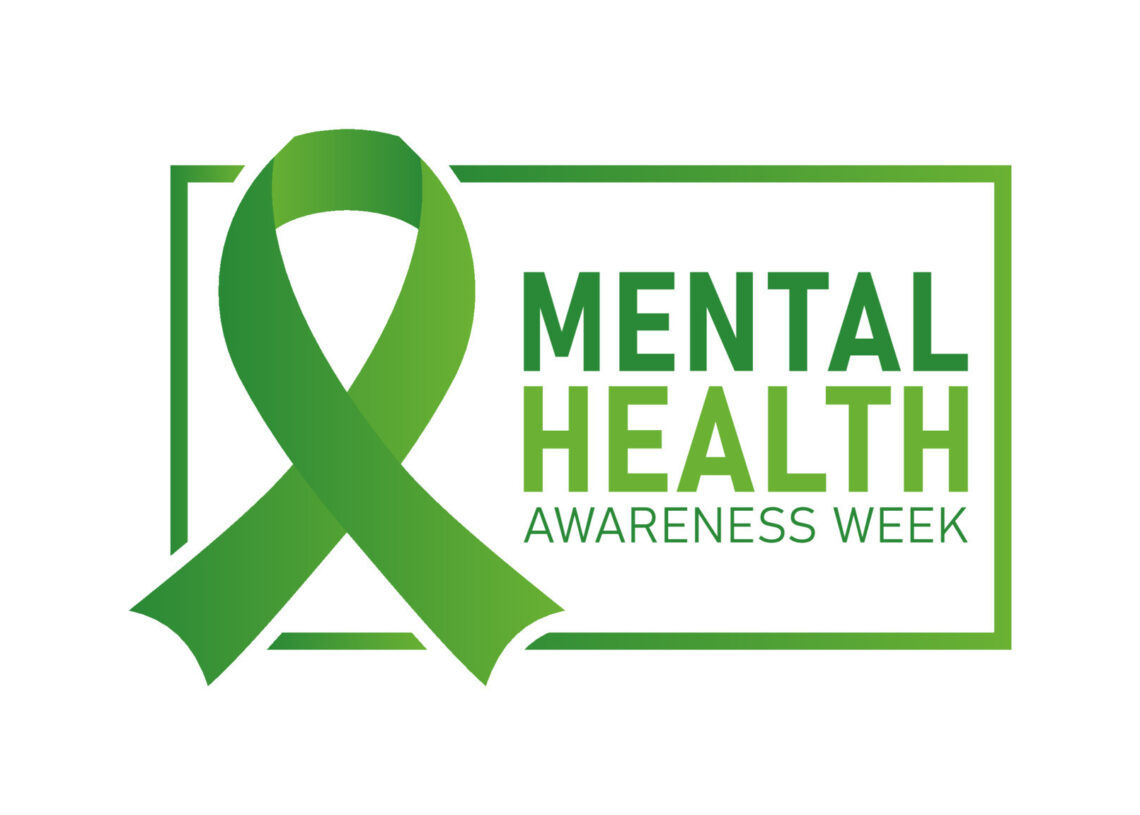Decoding Stress: Identifying and Addressing Hidden Factors
Stress can feel like an inescapable part of modern life, but understanding what triggers it is the first step towards regaining control. Let’s explore some common, often overlooked factors that contribute to heightened stress levels and practical strategies for addressing them.
Global Events and Personal Security Concerns
It’s easy to feel overwhelmed by events unfolding around the world. A recent poll highlights the widespread anxiety related to current affairs and personal safety. Financial worries and health concerns also rank high as significant sources of stress. It’s important to acknowledge these anxieties and develop coping mechanisms to manage them effectively. Staying informed is important, but setting boundaries with news consumption can prevent feeling overwhelmed. Focusing on what you can control, such as personal finances and health, can also alleviate stress.
Social Media and Technological Pressures
Social anxiety, particularly among younger individuals, is often exacerbated by the pervasive nature of social media. Constant connectivity and the pressure to present a perfect image can lead to feelings of inadequacy and increased avoidance behaviors. The relentless stream of information and comparisons on social platforms can fuel self-doubt and anxiety.
Moreover, the rapid advancement of technology adds another layer of complexity, contributing to overall stress levels. The need to constantly adapt to new technologies, coupled with concerns about privacy and security, can create a sense of unease.
Strategies for mitigating these pressures include setting time limits for social media use, curating your online feed to include positive and uplifting content, and practicing digital mindfulness. Engaging in real-life social interactions and pursuing hobbies that disconnect you from technology can also promote well-being.
Proactive Strategies for Mental Well-being
Recognizing when stress begins to interfere with daily life is crucial. Experts recommend adopting proactive mental health strategies and self-care practices to build resilience and manage stress effectively.
Mindfulness exercises, such as meditation and deep breathing, can help calm the mind and reduce feelings of anxiety. Regular physical activity releases endorphins, which have mood-boosting effects. Setting realistic expectations for yourself and practicing self-compassion can also alleviate stress.
Prioritizing sleep, maintaining a healthy diet, and engaging in activities you enjoy are essential components of self-care. Building a strong support system of friends, family, or a therapist can provide valuable emotional support during challenging times.
Seeking Support and Fostering Resilience
Don’t hesitate to reach out for support if you’re struggling with stress or anxiety. Talking to a trusted friend, family member, or mental health professional can make a significant difference. Sharing your concerns and seeking guidance can provide a sense of relief and help you develop effective coping strategies.
Building resilience through healthy coping mechanisms is key to navigating stress triggers effectively. Resilience involves developing the ability to bounce back from adversity and adapt to challenging situations. Practicing self-care, maintaining a positive outlook, and seeking support when needed are all essential components of resilience.
From Isolation to Connection: Exploring Therapy and Treatment Options
Understanding mental health is crucial, and fortunately, awareness is growing. More people are seeking help, and it’s important to know what options are available, from therapy to medication, to find the best path forward.
Trends in Mental Health Treatment
Recent surveys reveal a positive trend: more adults are receiving mental health treatment. For those with any mental illness, over half received treatment. The percentage is even higher for adults with serious mental illnesses. This indicates a greater willingness to seek support and a growing recognition of the importance of mental health care.
Therapy vs. Medication
Interestingly, there’s a shift happening in the types of treatment people are choosing. Outpatient talk therapy is becoming more popular than relying solely on medication. This suggests individuals are finding value in therapeutic approaches that address the underlying causes of mental health issues and promote long-term well-being.
Therapy offers a safe and supportive space to explore thoughts, feelings, and behaviors. It can help individuals develop coping mechanisms, improve relationships, and gain a deeper understanding of themselves. Medication can be an effective tool for managing symptoms, but it’s often most beneficial when combined with therapy.
Addressing Disparities in Access and Equity
While progress is evident, disparities persist. Different age groups and ethnic backgrounds may experience variations in access to and utilization of mental health services. Addressing these inequities is essential to ensure everyone receives the care they need.
Factors contributing to these disparities include lack of insurance coverage, cultural stigma, language barriers, and geographical limitations. Efforts to improve access to mental health care must address these systemic barriers and promote culturally competent services.
Unleashing Your Thoughts: The Therapeutic Power of Journaling
In today’s fast-paced world, finding moments of calm and clarity can be a challenge. However, the simple act of journaling offers a powerful pathway to mental well-being. Let’s explore how putting pen to paper can unlock a clearer, more balanced state of mind.
The Growing Appeal of Journaling
Journaling and similar self-help methods are gaining traction, especially among younger generations. A survey showed that a large percentage of Gen Z are now using journaling, self-help books, and podcasts as part of their mental health routines. This reflects a growing awareness of the benefits these tools can provide.
The accessibility and affordability of journaling make it an attractive option for those seeking to improve their mental well-being. It can be practiced anywhere, anytime, and requires minimal resources.
Emotional Well-being Benefits
Journaling is recognized for its positive impact on emotional regulation. It can help reduce overthinking and support recovery by offering a structured way to reflect and recognize patterns. The practice provides an outlet for processing emotions and experiences in a healthy way.
Writing about stressful events or traumatic experiences can help individuals gain perspective and reduce the intensity of their emotions. Journaling can also promote self-awareness and help individuals identify triggers for negative emotions.
Disconnecting from Digital Overload
Experts highlight that writing can help individuals disconnect from digital distractions. It provides an opportunity to clarify personal values and track progress in personal growth or therapy. This mindful practice can lead to greater self-awareness and focus.
In a world dominated by screens and constant connectivity, journaling offers a welcome respite. It allows individuals to slow down, reflect on their thoughts and feelings, and connect with themselves on a deeper level.
Journaling as a Complementary Practice
These trends indicate a broader shift towards accessible, daily self-care habits, complementing therapy and clinical interventions. Self-help and journaling are now seen as essential for unlocking mental wellness and resilience when facing stress and other life challenges.
Journaling can be a valuable addition to therapy, providing a space to process emotions and track progress between sessions. It can also empower individuals to take an active role in their mental health care and develop coping mechanisms for managing stress and anxiety.
Gen Z’s Embrace of Self-Help
Journaling and other self-help practices are increasingly popular among Gen Z in the United States for mental health management. A 2025 survey indicated that 77% of Gen Z engage in self-help activities like journaling, reading self-help books, and listening to podcasts. Journaling is believed to improve emotional regulation, reduce over-thinking, and aid addiction recovery by providing a structured outlet for reflection. Experts note that writing helps individuals distance themselves from digital distractions, clarify their values, and track personal growth or therapy progress. This trend reflects a movement toward daily self-care habits as a complement to therapy, with self-help and journaling seen as vital for mental wellness and resilience.
Finding Your Center: Breathing Techniques for Stress Reduction
Feeling stressed? You’re not alone. Many experience stress in their daily lives, but simple techniques can offer relief. Let’s explore some breathing exercises that can help you manage stress and promote a sense of calm.
Understanding the Impact of Stress
Stress can manifest in various ways, impacting our physical and mental well-being. Recognizing the signs of stress is the first step in managing it effectively. From racing thoughts to physical tension, understanding your personal stress triggers allows for proactive intervention.
Common symptoms of stress include headaches, muscle tension, fatigue, irritability, and difficulty concentrating. Recognizing these symptoms can help you identify when you need to take steps to manage your stress.
The Power of Breath Control
Breathing exercises are a readily accessible tool for managing stress. Deep, controlled breathing can activate the body’s relaxation response, helping to slow heart rate and reduce feelings of stress. Consistent practice enhances your ability to regulate your emotional state.
When you’re stressed, your breathing becomes shallow and rapid. Deep breathing exercises help to reverse this process, promoting relaxation and reducing anxiety.
Simple Breathing Techniques
One effective technique is diaphragmatic breathing, or “belly breathing.” Place one hand on your chest and the other on your stomach. Inhale deeply through your nose, allowing your stomach to rise while keeping your chest relatively still. Exhale slowly through your mouth, feeling the tension leave your body.
Another technique is box breathing, which involves inhaling for a count of four, holding your breath for a count of four, exhaling for a count of four, and holding your breath again for a count of four. Repeat this cycle several times to promote relaxation.
Integrating Mindful Breathing
Incorporate mindful breathing into your daily routine. Take a few moments each day to focus solely on your breath, noticing the sensation of each inhale and exhale. This practice can be done anywhere, anytime, providing a quick and discreet way to manage stress in the moment. Recent data highlights the prevalence of stress symptoms across age groups.
| Age Group (Years) | Prevalence of Stress Symptoms (%) | Data Year | Source/Region |
| 3–17 | 10.0 | 2021–2022 | United States (CDC) |
| 18–29 | 26.6 | 2022 | United States (CDC) |
| ≥65 | 11.2 | 2022 | United States (CDC) |
Data source: Centers for Disease Control and Prevention, as reported by SingleCare “Anxiety Statistics” Published July 17, 2025
As shown, stress affects a wide range of individuals, underscoring the importance of accessible coping mechanisms.
Seeking Additional Support
While breathing exercises can be incredibly helpful, it’s important to remember that they are just one tool in managing stress. If you’re struggling with persistent or overwhelming stress, seeking professional support from a therapist or counselor is essential.
Removing Obstacles: Making Mental Health Care Accessible
Mental well-being is crucial, yet accessing support can be challenging. Let’s explore the obstacles and discuss ways to improve mental health resource accessibility for everyone, especially the youth.
Understanding Barriers to Access
Many young individuals face difficulties in obtaining the mental health support they require. For instance, a considerable percentage of adolescents aged 12-17 report struggling to access care. Even among those experiencing major depressive episodes, a large portion do not receive the necessary treatment.
Factors contributing to these difficulties include lack of insurance coverage, transportation barriers, long wait times, and a shortage of mental health professionals.
The Vital Role of Schools
Schools play a vital role, but they’re facing increased demand. Over half of public schools have reported a rise in students seeking mental health services. However, only a slight majority feel fully equipped to meet all these needs.
Schools can provide a safe and supportive environment for students to access mental health services. However, many schools lack the resources and staff to meet the growing demand.
Addressing Systemic Challenges
These trends highlight the urgent need for systemic solutions. Key obstacles include insufficient funding, a shortage of qualified professionals, and inadequate training for staff. Overcoming these hurdles is essential to ensure equitable access to mental health support.
Increased funding for mental health services, recruitment and retention of mental health professionals, and training for teachers and school staff are essential steps towards improving access to care.
Overcoming Stigma and Building Trust
Stigma remains a significant barrier, preventing many from seeking help. Many young people prefer to handle problems alone, fearing judgment or doubting the effectiveness and confidentiality of treatment. Building trust and promoting open conversations are crucial steps.







